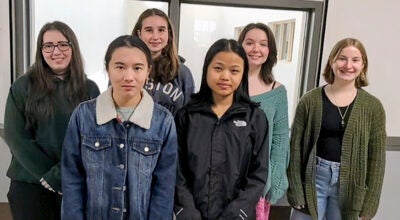The importance of diversity in children’s literature
Published 7:01 am Saturday, March 7, 2020
By Kristi Beckman
Austin Public Schools Integration Coordinator
Read Across America week is one of my favorite milestones in the school year. As an educator and book lover, I feel that getting the “right” books into the hands of kids can be key to helping them learn to read and love to read. As our community grows more diverse and we start to realize the importance of preparing kids for a global society, ensuring access to diverse books becomes essential.
My love for books started early, and reading has been a lifelong passion for me. By third grade, I was devouring every Nancy Drew and Babysitter’s Club book I could get my hands on. During summer break, my mom would take me to the public library, where I would choose the five books I was limited to checking out per library regulations. Two days later, I was whining to my frustrated mother that I was out of reading material again. As I reflect on my early experience reading, I realize how fortunate I was to find books that sparked an excitement for reading in me and led me toward a lifelong love of reading.
As an educator who is passionate about equity, I now look back on the books that were available to me and realize that many of them provided mirrors into my own interests and identity, but I didn’t really push myself to seek out books that provided “windows” into the experiences of others. Growing up in a small, rural community without a lot of racial and ethnic diversity, perhaps there wasn’t such a sense of urgency for creating a diverse collection of texts. Now, as a mother of three biracial, bilingual children, the need for diverse books is of critical importance to me. I’m committed to helping my kids find books that mirror their unique identities. My kids are Spanish-speakers and English-speakers. They’re white and Hispanic, and they connect uniquely to both their Minnesotan/Irish/German heritage and their Mexican traditions. They need books that celebrate the unique language skills they have, their ethnic identities, and their experiences growing up with a different experience of the world than either of their parents.
For me, finding a series of books I could pick up one after the other helped me have a constant supply of reading material. For my own kids, though, finding a series that reflects their multicultural identity is a bigger challenge. Yes, they love Magic Tree House, the Rainbow Magic Fairies, and Harry Potter. There are certainly diverse themes and settings in those books. Finding a series that features protagonists from different ethnic and linguistic backgrounds is challenging, though. That means that, as educators, it’s critically important that we ensure kids can easily find texts that serve as “mirrors” into their own experiences and recognize that they come from a wide variety of religious, racial, linguistic, socio-economic, and gender backgrounds.
The added benefit of ensuring access to books that reflect the diverse experiences of our students is that those books also serve as “windows” into others’ experiences of the world. Growing up in a small rural community, I didn’t have black friends until I got to college. I had never met a Muslim person. I now recognize the power that reading can have to help our kids build empathy for others’ experiences. In a world where we are ever-more divided, books have the power to help us gain perspective, think critically, build empathy, and prevent bullying. As adults, it’s our responsibility to ensure kids have both windows and mirrors. We can help provide those by modeling for kids: pick up a book by an author from a background different from your own.
For an amazing list of diverse books and authors by category and age group, check out www.teachingforchange.org.





